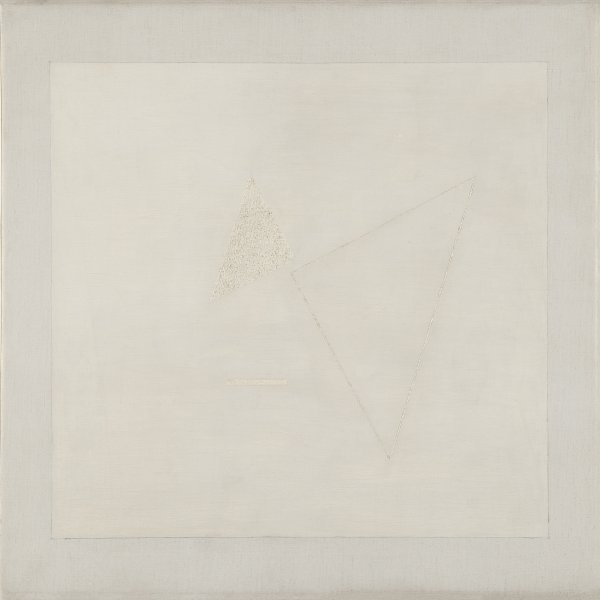Friedrich Vordemberge-Gildewart
Osnabrück, 1899-Ulm, 1962
The German artist Friedrich Vordemberge-Gildewart studied design and architecture at the Kunstgewerbeschule in Hanover. His first pictures were notable for their geometry and tendency towards non-figuration, which would be a constant feature throughout his artistic career.
Vordemberge-Gildewart’s work was first shown in 1924 at the Kestner- Gesellschaft in Hanover, where it received critical attention. That year he started on his typographic work and opened a workshop in the Kestner- Gesellschaft building. He met Kurt Schwitters and, through him, Hans Arp and also Theo van Doesburg, who helped him join the Dutch Neo-Plasticist group De Stijl in 1925. Following this Vordemberge-Gildewart adopted a more reduced palette and published a few of his works in the magazine that had given its name to the group. In 1927 he founded the group Die Abstrakten Hannover together with Schwitters, Carl Buchheister, Rudolf Jahns and César Domela and also collaborated with Ring Neue Werbegestalter, an initiative of Schwitters bringing together designers and artists who worked in advertising. He later joined the Abstraction-Création group in 1932.
The advent to power of the Nazis marked Vordemberge-Gildewart’s life and his artistic career. After living in Berlin during 1936 and 1937 and passing through Switzerland, he settled in the Netherlands, of which he became a citizen after the Second World War ended. During this time he was forced to paint in secret, and produced works notable for their balance and luminosity, which Hans Arp described as a counterpoint to the chaos of the period in the first monograph on the artist published in 1949.
In 1953 he received an award at the São Paulo Bienal and the following year accepted a teaching post at the Hochschule für Gestaltung in Ulm, Germany, where he worked for the rest of his life.
Vordemberge-Gildewart’s work was first shown in 1924 at the Kestner- Gesellschaft in Hanover, where it received critical attention. That year he started on his typographic work and opened a workshop in the Kestner- Gesellschaft building. He met Kurt Schwitters and, through him, Hans Arp and also Theo van Doesburg, who helped him join the Dutch Neo-Plasticist group De Stijl in 1925. Following this Vordemberge-Gildewart adopted a more reduced palette and published a few of his works in the magazine that had given its name to the group. In 1927 he founded the group Die Abstrakten Hannover together with Schwitters, Carl Buchheister, Rudolf Jahns and César Domela and also collaborated with Ring Neue Werbegestalter, an initiative of Schwitters bringing together designers and artists who worked in advertising. He later joined the Abstraction-Création group in 1932.
The advent to power of the Nazis marked Vordemberge-Gildewart’s life and his artistic career. After living in Berlin during 1936 and 1937 and passing through Switzerland, he settled in the Netherlands, of which he became a citizen after the Second World War ended. During this time he was forced to paint in secret, and produced works notable for their balance and luminosity, which Hans Arp described as a counterpoint to the chaos of the period in the first monograph on the artist published in 1949.
In 1953 he received an award at the São Paulo Bienal and the following year accepted a teaching post at the Hochschule für Gestaltung in Ulm, Germany, where he worked for the rest of his life.




